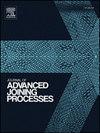Exploring wire-arc additive manufactured rivets for joining hybrid electrical busbars
IF 4
Q2 MATERIALS SCIENCE, MULTIDISCIPLINARY
引用次数: 0
Abstract
This paper presents a joining by plastic deformation process for fabricating hybrid electrical busbars made from copper and aluminum sheets. The process comprises the innovative use of wire-arc additive manufacturing to deposit copper rivets at specific locations on the copper sheets, the machining of slots with the required geometry in the aluminum sheets, and the compression of the copper sheets to force the rivets into the pre-machined slots of the aluminum sheets, creating form-closed mechanical interlocks. The work combines experimentation and finite element modeling to analyze the influence of the most significant process parameters, and the electrical performance of the hybrid busbar joints is evaluated and compared to that of conventional fastened joints at different service temperatures. Results demonstrate the effectiveness and potential advantages of the new joining by plastic deformation process for fabricating hybrid electrical busbars.
探索用于连接混合电母线的线弧添加剂制造铆钉
介绍了一种用塑性变形法连接铜铝板混合动力母线的方法。该工艺包括创新地使用电弧增材制造将铜铆钉沉积在铜片上的特定位置,在铝片上加工具有所需几何形状的槽,以及压缩铜片以迫使铆钉进入铝片的预先加工槽,从而形成封闭的机械联锁。结合实验和有限元建模,分析了最重要的工艺参数对混合母线接头的影响,并在不同使用温度下对混合母线接头的电性能进行了评估,并与常规紧固接头进行了比较。结果表明,采用塑性变形连接技术制造混合动力母线是有效的,具有潜在的优势。
本文章由计算机程序翻译,如有差异,请以英文原文为准。
求助全文
约1分钟内获得全文
求助全文

 求助内容:
求助内容: 应助结果提醒方式:
应助结果提醒方式:


